If you watch the birds in yard hunt bugs, you might catch them attacking bees. So, do birds eat bees?
The short answer is yes, birds eat bees. There are many types of birds that eat insects, but only certain birds eat bees. Some birds are bee-catching experts, but others will feast on dead, dying, or hurt bees.
Bees are certainly not an easy meal to catch. They are small and fast and do not fly in a straight line. Birds that eat bees need to be quick and accurate in order to avoid getting stung.
Some birds only eat bees occasionally, but others consume bees as a large part of their diet. Birds that eat primarily bees are called bee-eaters.
Bees are eaten as adult insects or as larvae. Bee-eaters, purple martins, scarlet tanagers, and summer tanagers eat adult bees. Wasps are eaten too. Honey buzzards, on the other hand, prefer to eat the larvae.
Which Birds Eat Bees?
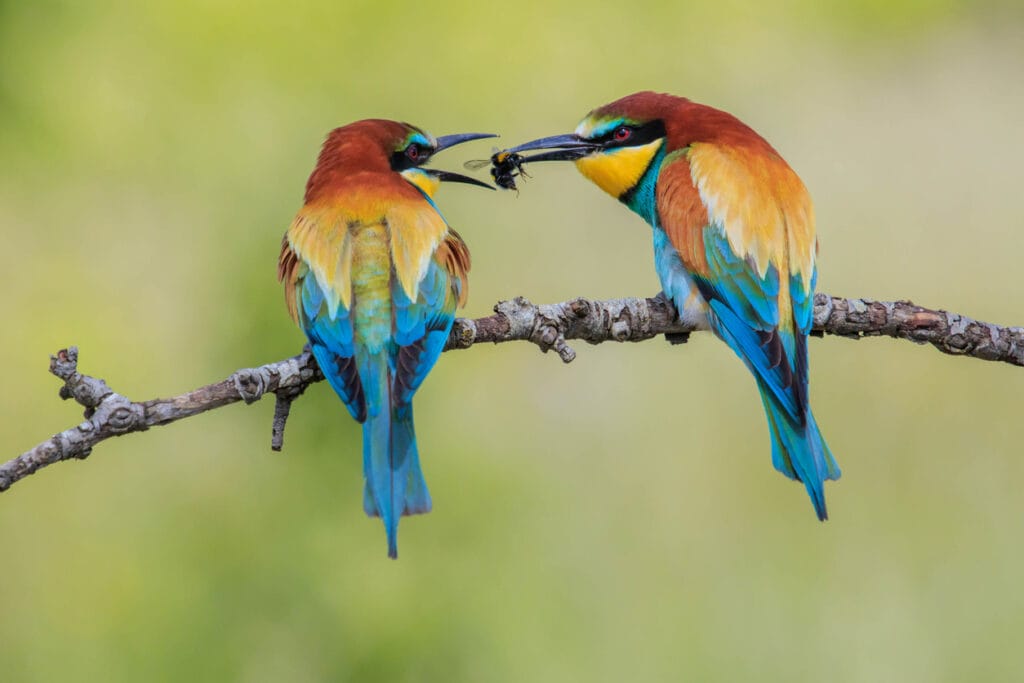
Bee-eaters
Bee-eaters are from the family Miropidae and there are about 26 different species of birds in the family. They are mostly found in Africa, Asia, and Southern Europe; they are not common in the United States.
Bee-eaters are medium-sized, brightly colored birds. They are very social and quite vocal. Bee-eaters feed on bees, honey bees, flies, and other insects. They have specialized, curved beaks that help to capture and disarm the bees before eating them.
Author Note: Bee-eaters have two different methods they use for catching prey. The first method is gliding through the air and catching bees and or other insects mid-flight. The other is swooping down from branches.
After catching the bee, a bee-eater will use its curved beak to hit the bee’s head against a hard surface. This is to kill the bee as well as to rub off the stinger and toxins before the bee is consumed.
An interesting thing about these birds is that they live underground. They dig holes in the earth and make egg chambers in these holes.
Summer Tanagers
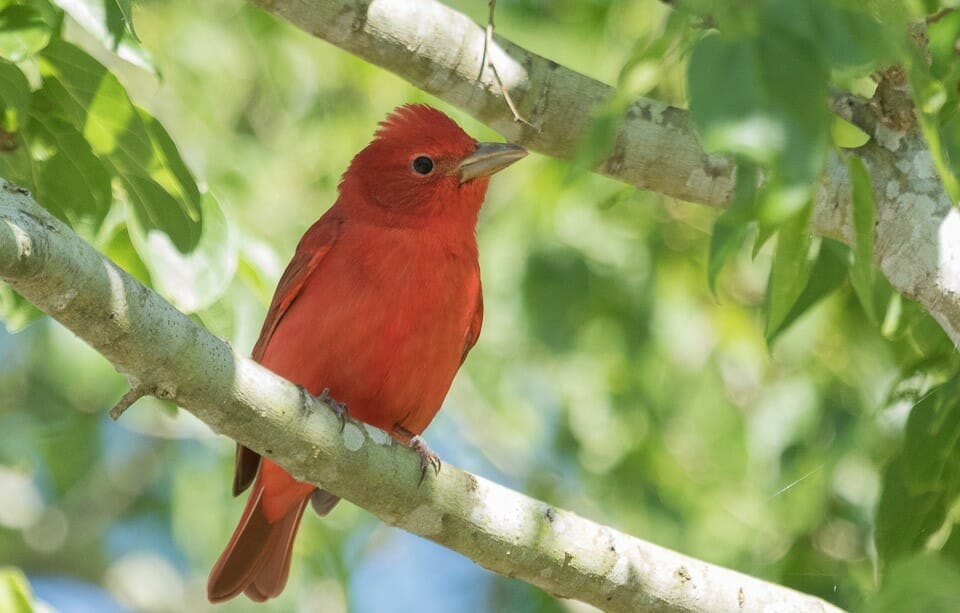
Summer Tanagers (Piranga rubra) have large bodies with big heads and thick blunt-tipped bills.
They enjoy bees and wasps as a large portion of their diet. A summer tanager will charge swiftly and catch a bee in its bill. After catching the bee, it will bash the bee against a branch or other hard surface.
The male summer tanager is the only completely red bird in North America. It is striking against the green leafy background of the trees. The females are harder to spot as they are not as bright. They have mustard yellow coloring with grey wing feathers.
Both the male and female summer tanagers like to sing. Males have a particularly lovely whistling song that resembles the song of the American Robin.
Summer tanagers like to live in open wooded areas, and they especially enjoy oak trees. They can be found throughout the southern United States, as far north as Iowa. They are also known to migrate to Central America, Mexico, and South America.
Scarlet Tanagers

Scarlet Tanagers (Piranga olivacea) are also bold, striking birds. The males are bright red with black wings and tails. The females are less vibrant than the males. Females are light yellow in color with gray wings and tails. The males and females like to sing to each other. The female scarlet tanagers also like to sing during nest building.
Author Note: Scarlet tanagers enjoy eating bees, hornets, and wasps. They hover in the air and catch their prey mid-flight. Once caught, they knock the insect onto a tree branch to kill it.
These beautiful birds can be hard to spot as they like to stay high up in forest canopies. You may be lucky and catch a flash of bright red as the scarlet tanager jumps between the branches. It’s useful to pay close attention to their song as it will help you to locate them and identify them.
Scarlet tanagers also like to eat a variety of different berries. You could attract scarlet tanagers to your yard by planting berries such as strawberries, mulberries, raspberries, juneberries, and huckleberries.
Mockingbirds

Mockingbirds, in particular Northern Mockingbirds, are well-known visitors to back gardens all across North America. These birds are gray in color with light bellies. They have white patches on their wings and tail, which can be seen when they are flying.
Mockingbirds live in open areas and at the edges of forests, although they like to hunt in grassy areas. They are most known for their habit of mimicking the sounds that other birds, insects, or amphibians might make.
Mockingbirds usually hunt at ground level and will eat whatever they find crawling around.
During summer, mockingbirds eat a variety of insects such as bees, wasps, grasshoppers, moths, and beetles. They also enjoy eating fruit.
During the colder winter months, they will change their diet and eat more fruits instead of insects. Putting fruit out on bird feeders during winter is a good way to attract mocking birds to your garden.
Woodpeckers

Woodpeckers are fond of the larvae of bees and may hammer into beehives in order to feast on the soft, juicy protein bites within. They also eat other living insects in adult, pupae, or larvae form, such as grubs, spiders, ants, and borers.
Woodpeckers make a loud hammering noise when trying to get to insects inside trees and decaying wood. They also hammer to proclaim their territory or to attract a mate. If the birds are drumming to attract a partner, they will probably stop once the breeding season has started.
There are 180 different kinds of birds in the woodpecker family. Woodpeckers can be found almost everywhere in the world, except in New Guinea and Australia. They are widely popular in South America and Southeast Asia.
Can Birds Get Stung by Bees?
Bees and wasps don’t usually sting unless they are threatened or trapped. When a bee is disturbed while foraging, it will simply fly away. Bees tend to use their sting as their last resort. They only have one shot. When a bee stings, the stinger gets left behind, and the bee dies.
Some species of birds have learned to knock the hive entrance and feast on bees as they fly out. A woodpecker will happily drill holes into hives in
Birds do get stung by bees sometimes, but they are able to handle it. If a bee wants to sting a bird, it needs to make its way to the base of the feathers to pierce the skin. Birds are clever and aware of this, and they will fly off. Birds can fly faster than bees, so they are able to escape a swarm. Multiple stings may kill a bird. Once in a safe place, the bird will remove any hitchhiker bees before they are able to reach the skin.
Birds and Bees Living Together
It’s not uncommon to find bees hanging around bird feeders. Especially as winter is breaking. At this time, the flowers are not yet in bloom, and the bees need to find alternative food sources.
Author Note: Bees will feed on pollen-sized seed dust particles and yeast found in cracked corn and other seeds. They will move onto their preferred food, nectar, as the Spring flowers start to bloom.
Hummingbirds, in particular, have an interesting relationship with bees, wasps, and hornets. These beautiful little birds compete with their flying friends for the same food sources. It’s not surprising that conflict may happen at feeding time.
Wasps, hornets, and yellow-jackets may not be the nicest insects to have around, but bees are less aggressive and only sting if they are in trouble. Bees are an essential part of our ecosystem. They play an important role in pollinating flowers, vegetables, and trees. It would be impossible to grow any crops without bees.
Deterring Bees from Hummingbird Feeders

Bees are attracted to the sweet nectar at hummingbird feeders. If you would like to prevent bees from coming to your feeders, it’s best to deter them rather than destroying them. The idea is to get them to feed somewhere else but still allow them to play their important role of pollinating plants.
Here are a few ways to deter bees from hummingbird feeders:
- Eliminate any leaks in your feeder. If there are no leaks, there is less chance of attracting bees. The top-fill hummingbird feeder offers new and improved gaskets that are leak-proof.
- Keep your bird feeder clean. As hummingbirds feed on the nectar, they may drip or make a mess. Wipe down the feeder regularly and do not overfill it.
- Confuse bees by removing the feeder for a few days and putting it up in a different spot. It will take them some time to discover the feeder again.
- Avoid using yellow feeders as bees are attracted to the color yellow. Bees are not attracted to red, so if your bird feeder has yellow trims, you could paint them red.
- Use feeders with bee guards. These little cages will prevent bees from getting to the sweet nectar but will not affect hummingbirds from having a meal.
- Reduce the sugar ratio of the nectar mixture in the feeder by adding more water. If the nectar is less attractive, the bees will move on. Hummingbirds will stick around as they have a much better memory than bees.
Conclusion
Bees are a very important part of our ecosystem and essential for a garden to flourish. If you have a bee problem, it’s important to use removal or deterrent methods that are not harmful to the bees.
A small number of birds feast on bees as part of their diet, but they are not hugely popular as they are difficult to catch and can offer a nasty sting. Birds such as summer or scarlet tanagers, mockingbirds, or purple martins use special techniques to kill and disarm bees before consumption.
Bees are consumed at all different stages of their life cycle, depending on the bird’s preference. Although tricky to hunt, they are a satisfying meal for certain birds and worth the effort! We hope you enjoyed this article on do birds eat bees.
Fly high friends!
FAQ
You can mix a white vinegar with equal amounts of water and then spray that on a hummingbird feeder to deter bees.
Bees are so important in our world that an alternative to a deterrent would be better. I have seen people specially design bridges into bird baths so bees can also drink without drowning. There are lots of ideas about how to help bees. Search for organizations in your local area.




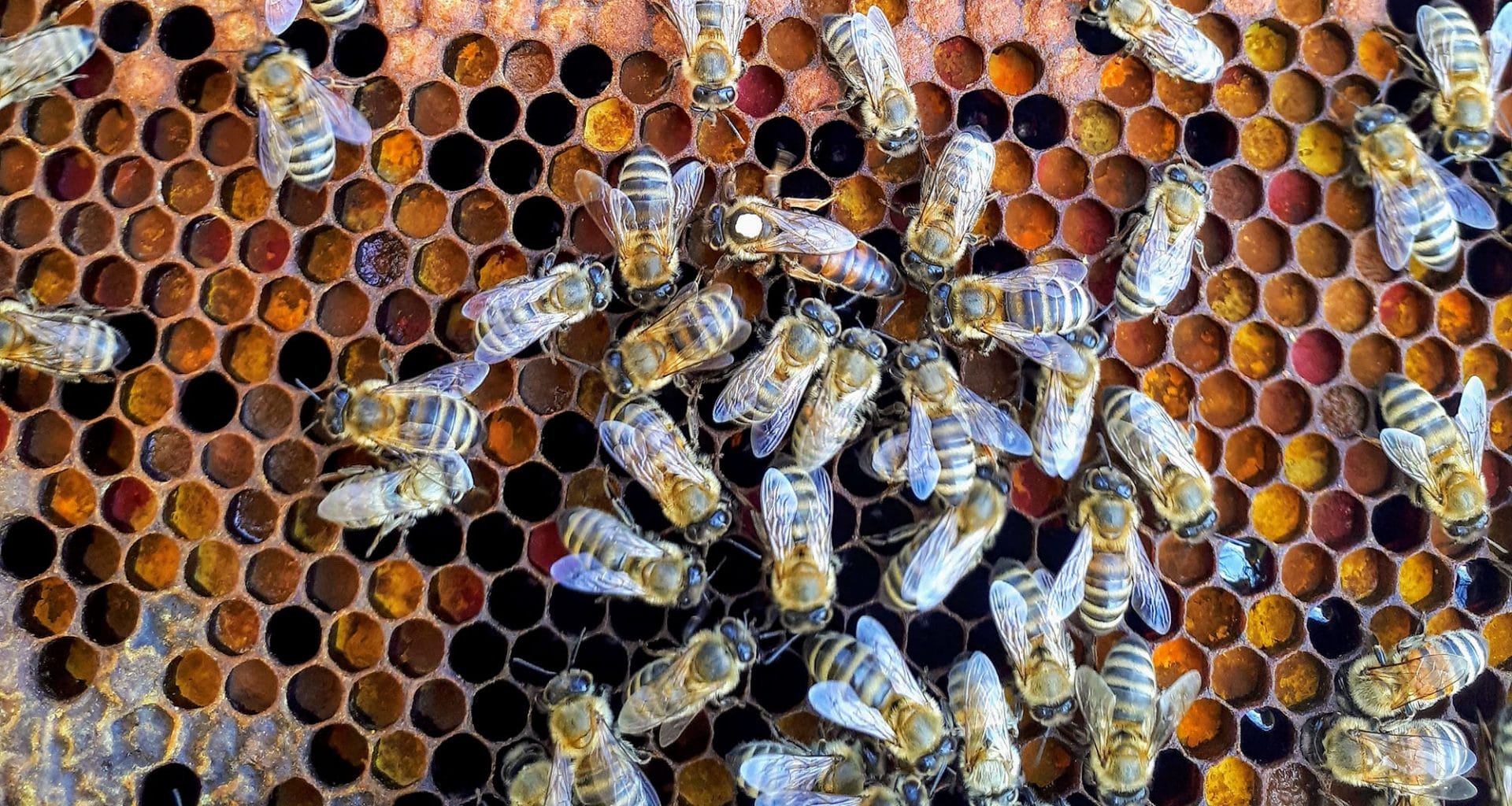
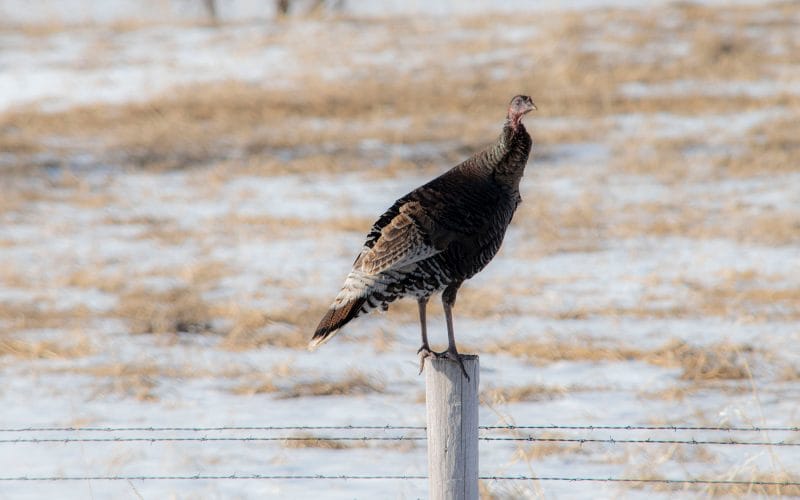

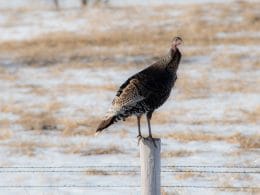


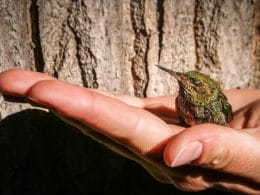
Thanks a lot. Your article has answered my problem. Bees are tricky insects to eat because they are small, fast, and can sting! So I wonder that why do birds eat bees?
I wonder that Honey Buzzard is the birds who eat bees, isn’t it?